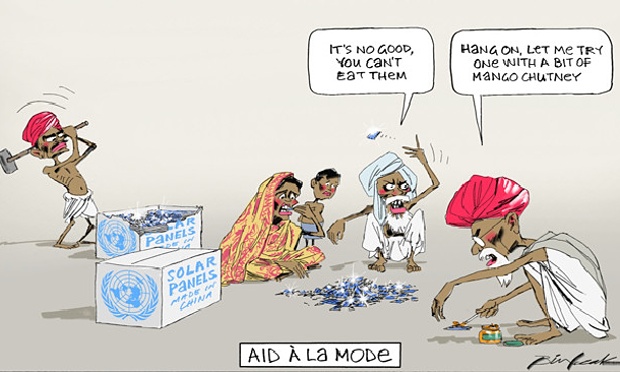That position was not only opposed by western negotiators – it was also caricatured in the western press, sometimes using metaphors that seemed to have racist overtones.
On Monday, The Australian published by a cartoon by Bill Leak depicting Indian trying to figure out how to use solar panels, which could help cut carbon emissions.

It soon attracted attention on social media.
@i_zzzzzz bill leak fell off his balcony and landed on his head in 2008 and has been extremely racist ever since
— j.r. hennessy (@jrhennessy) December 14, 2015
A quick reminder that Bill Leak was drawing racist cartoons long before his head injury. pic.twitter.com/G4JDqOpBMF
— John Nicolay (@johnnicolay) December 14, 2015
when your brain hits the floor you dont like brown people no more thatsa bill leak
— keen online poster (@jonathonio) December 14, 2015This isn't the first cartoon about the climate change talks in a western mainstream paper to have sparked ire. On December 6, The New York Times published a cartoon depicting India as an elephant obdurately bringing to a halt the train of climate change negotiations.

Only last year, another New York Times cartoon courted controversy for its depiction of India. In 2014, right after India’s Mars Orbiter Mission, the newspaper had published a cartoon showing an Indian knocking on the door of the “Elite Space Club”, his cow in tow. Both cartoons were drawn by cartoonist Heng Kim Song.

While these are doing the rounds on the internet, Indian cartoonists have their own view of what was happening at the Paris conference. This cartoon by Ajit Ninan published in The Times Of India tackles debate about how developed nations are shifting the burden of climate change on the shoulders of the developing nations.

Meanwhile, cartoonist Tom Scott might have nailed what actually went down at the summit.











